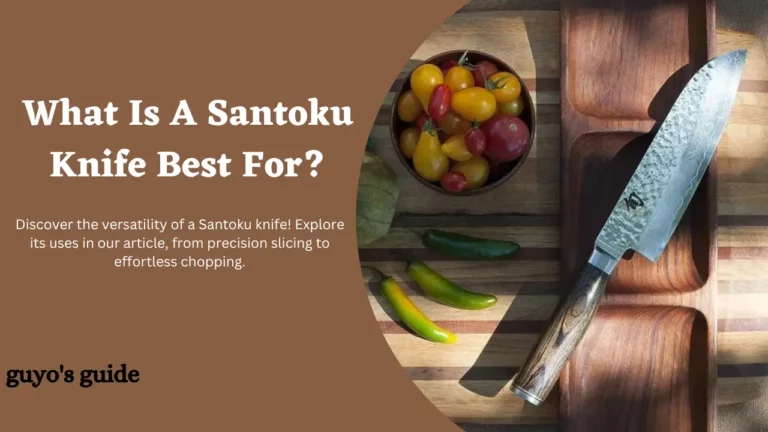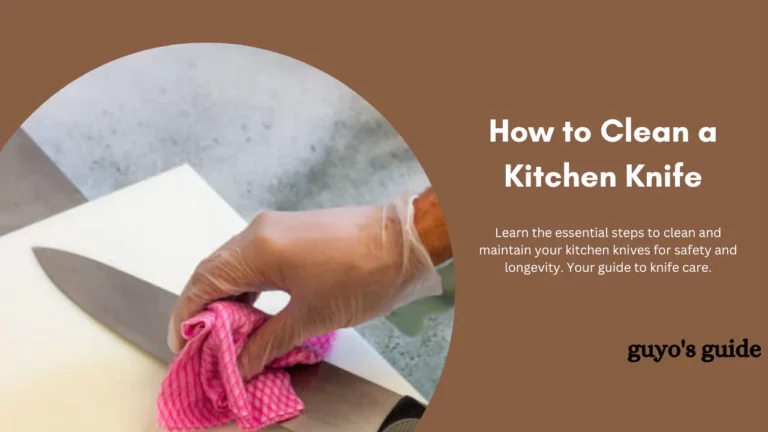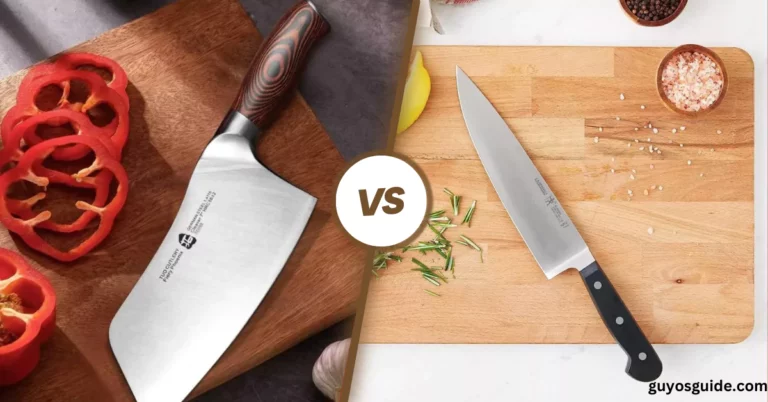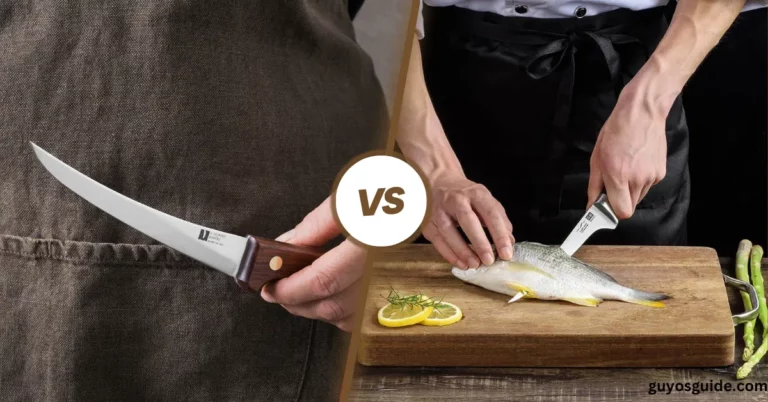What is a Paring Knife Used For?
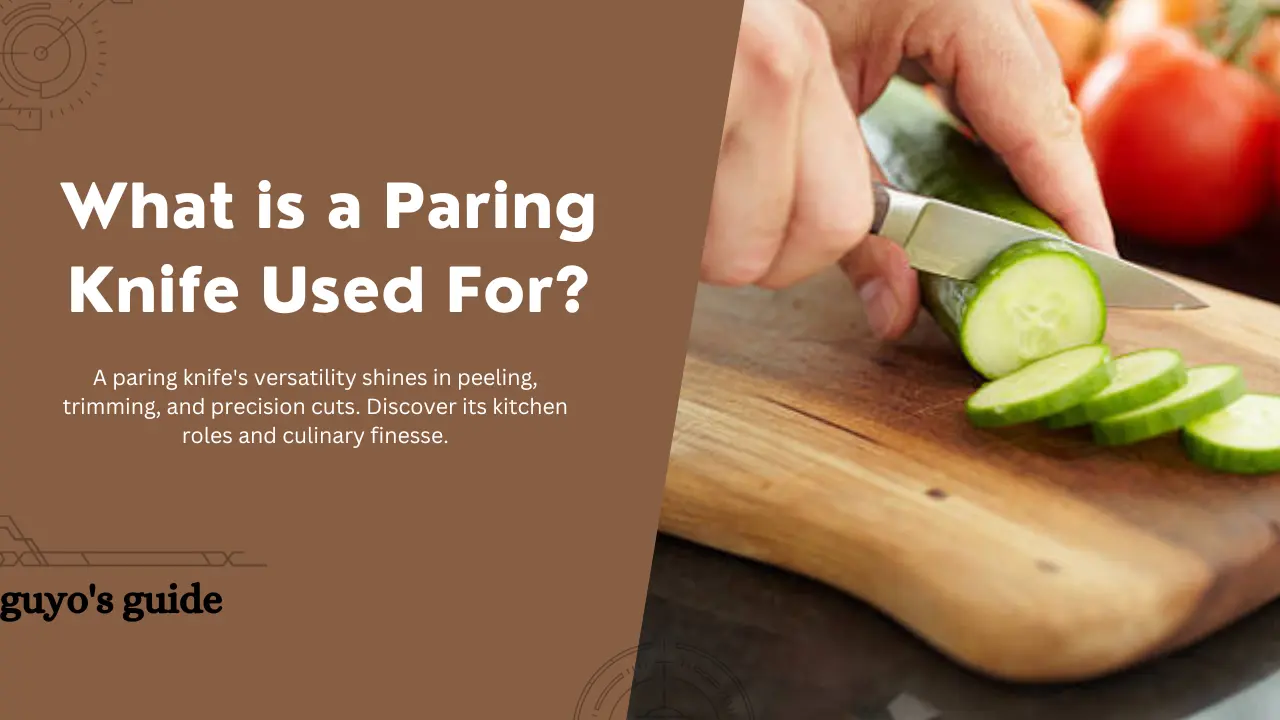

A paring knife is a versatile kitchen tool that serves multiple purposes.
From peeling fruits and vegetables to intricate tasks like deveining shrimp and creating intricate garnishes, a paring knife is essential for any home cook or professional chef.
In this blog post, we will explore the various uses of a paring knife and how it can elevate your cooking experience.
Let’s find out.
Uses of a Paring Knife
Paring knives are versatile kitchen tools that have a wide range of uses. Their primary purpose is for tasks that require precision and control. Here are the main uses of a paring knife:
1. Peeling
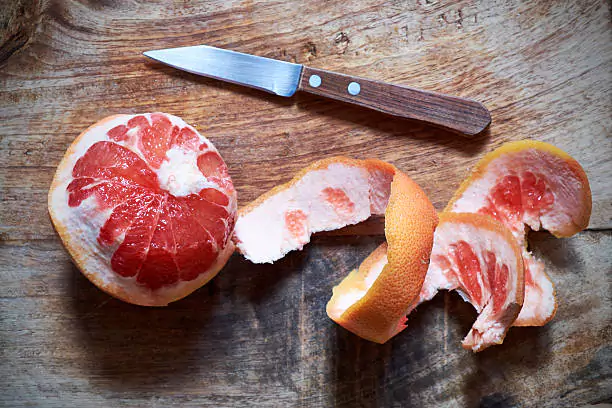
Peeling fruits and vegetables is one of the most common uses for a paring knife. Its precise control allows you to remove the skin or peel from items like apples, potatoes, carrots, and cucumbers with ease.
This helps improve the presentation and removes any undesirable textures or flavors.
2. Trimming
Paring knives are excellent for trimming and shaping ingredients. You can use them to remove blemishes from fruits and vegetables or to clean and trim excess fat from meats.
They’re also great for removing stems and seeds from peppers or removing the ends from green beans.
3. Slicing

While not ideal for heavy-duty slicing, a paring knife can still handle slicing small ingredients. This is handy when slicing garlic, shallots, or cherry tomatoes.
It’s also great for thinly slicing or segmenting citrus fruits.
4. Coring
For fruits like apples and pears, a paring knife can be used to core them efficiently. Simply cut around the core and remove it, leaving you with a clean, edible fruit.
5. Hulling

A paring knife is essential for hulling strawberries. You can remove the leaves and the white core quickly, leaving behind just the sweet, juicy flesh.
6. Pitting
When dealing with small fruits such as cherries or olives, a paring knife can help you remove pits with precision, ensuring your dishes are pit-free.
7. Garnishing
Paring knives are often used for creating decorative garnishes. You can carve intricate designs into vegetables, fruits, or herbs for artistic presentation.
8. Detail Work
For intricate tasks like decorative carving or creating garnishes, a paring knife’s precision is invaluable.
It’s perfect for carving decorative shapes out of vegetables, fruits, or cheese for garnishing salads or platters.
9. Deveining Shrimp
When preparing shrimp or prawns, a paring knife is ideal for deveining. Simply make a shallow cut along the back and remove the vein for a more appealing and palatable seafood dish.
10. Zesting
The sharp edge of a paring knife can be used to remove the outer zest or peel from citrus fruits. The zest can add flavor and aroma to various dishes.
11. Removing Seeds
When dealing with fruits like peppers or tomatoes, a paring knife is handy for removing seeds and membranes with precision.
12. Scoring
Scoring the surface of food items, such as bread dough or meat, allows them to expand evenly during cooking. A paring knife is ideal for making these shallow, controlled cuts.
13. Small Cutting Tasks
Paring knives are useful for miscellaneous cutting tasks in the kitchen, such as slicing small blocks of cheese, portioning small pastry items, or trimming pastry dough.
14. Creating Citrus Twists
You can use a paring knife to cut decorative twists from citrus peels for cocktails or garnishes.
15. Detailing Cakes
Paring knives are helpful for fine detailing on cakes or other baked goods, such as shaping fondant decorations or removing imperfections.
Safety Tips
To ensure safe and effective use of a paring knife:
- Keep your paring knife sharp. A sharp blade is safer than a dull one and makes your work more efficient.
- Always cut away from your body and keep your fingers tucked safely away from the blade.
- Use a cutting board to protect your countertop and keep the knife steady.
- Wash the knife by hand, as the dishwasher can cause it to become dull or damaged.
- Store your paring knife in a knife block or magnetic strip to prevent accidents and to keep the blade protected.
Things a Paring Knife Should Not Be Used For
While paring knives are versatile kitchen tools, there are several tasks and situations for which they are not suitable due to their design and size. Here are some things a paring knife should not be used for:
1. Heavy-Duty Cutting
Paring knives are not designed for heavy-duty tasks like cutting through bones, hard-shelled fruits (e.g., coconuts), or very dense vegetables (e.g., butternut squash).
Attempting to use a paring knife for such tasks may damage the knife and pose safety risks.
2. Slicing Bread
Paring knives are not ideal for slicing bread, especially artisan or crusty loaves. Bread knives or serrated knives are better suited for this purpose.
3. Carving Large Roasts
Carving large cuts of meat or poultry, such as a turkey or a roast, is best done with a carving knife or a chef’s knife. Paring knives lack the length and heft needed for such tasks.
4. Cleaving or Splitting
Paring knives are not designed for tasks that involve cleaving or splitting large items. Use a heavy cleaver or a butcher’s knife for such purposes.
5. Deboning Heavy Cuts
While paring knives can be used for precision boning tasks, they are not suitable for deboning heavy or large cuts of meat, such as a whole chicken. A boning knife or fillet knife is better for these situations.
6. Peeling Large Quantities
Paring knives are efficient for peeling small quantities of fruits and vegetables, but for peeling large batches, consider using a specialized peeler to save time and effort.
7. Chopping Hard Foods
Paring knives are not designed for chopping hard foods, like nuts, because they lack the weight and stability required for such tasks. A chef’s knife or a cleaver is better for chopping.
8. Handling Hot Foods
Paring knives have shorter blades and handles, making them less suitable for tasks involving hot foods, especially flipping or turning items in a hot pan. Use tongs or a spatula instead.
9. Mincing Herbs or Large Quantities of Vegetables
While paring knives can be used for finely chopping herbs, they are not as efficient as larger knives, such as chef’s knives or santoku knives, for mincing larger quantities of herbs or vegetables.
10. Cutting Frozen Foods
Paring knives should not be used to cut through frozen foods or foods with hard, solid cores (e.g., frozen meat) as this can damage the blade.
11. Sharpening or Honing Other Knives
Paring knives are not suitable for sharpening or honing other knives. Use a honing rod or sharpening stone specifically designed for knife maintenance.
Caring for Your Paring Knife
Proper care and maintenance are crucial to keep your paring knife in top condition:
Hand Washing
Always wash your paring knife by hand with mild soap and warm water immediately after use. Avoid abrasive scrubbers that can damage the blade.
Drying
Thoroughly dry the knife with a towel to prevent rusting.
Storage
Store your paring knife in a knife block, magnetic strip, blade guard, or knife drawer organizer. Avoid storing it loosely in a drawer, as it can dull the blade and pose a safety hazard.
Honing
Regularly use a honing rod to keep the blade’s edge aligned. Honing doesn’t remove material but helps maintain sharpness.
Sharpening
When the knife becomes dull, invest in a good quality sharpening tool, like whetstones or a professional knife sharpener, to restore the blade’s sharpness. Follow the manufacturer’s guidelines for proper sharpening.
Safe Handling
Always handle your paring knife with care. Keep your fingers away from the blade, and cut on a stable surface to prevent accidents.
FAQs
How does a paring knife differ from other kitchen knives?
Paring knives have shorter, narrower blades, and they are designed for more delicate and detailed work compared to larger knives like chef’s knives. They offer greater control and precision.
Can I use a paring knife for heavy-duty cutting tasks?
While paring knives excel at fine and intricate work, they are not intended for heavy-duty cutting, such as butchering large pieces of meat or chopping dense vegetables. For such tasks, it’s better to use a chef’s knife or a cleaver.
What types of fruits and vegetables can I peel with a paring knife?
Paring knives are perfect for peeling a wide range of produce, including apples, potatoes, carrots, cucumbers, and more. They can also remove skin from citrus fruits like oranges or lemons.
What is the best way to maintain the sharpness of a paring knife?
To maintain a sharp edge, regularly use a honing rod to keep the blade aligned. When it becomes dull, sharpen it with a quality sharpening tool, like whetstones or a professional knife sharpener.
Wrap Up
A paring knife is a small but mighty kitchen tool, and mastering its various uses can significantly enhance your culinary skills.
With the right knife, proper maintenance, and safe handling, you can tackle a wide range of tasks with precision and confidence.
Whether you’re peeling, trimming, slicing, or creating decorative garnishes, a paring knife is an indispensable companion in your kitchen, making your food preparation more efficient and enjoyable.

